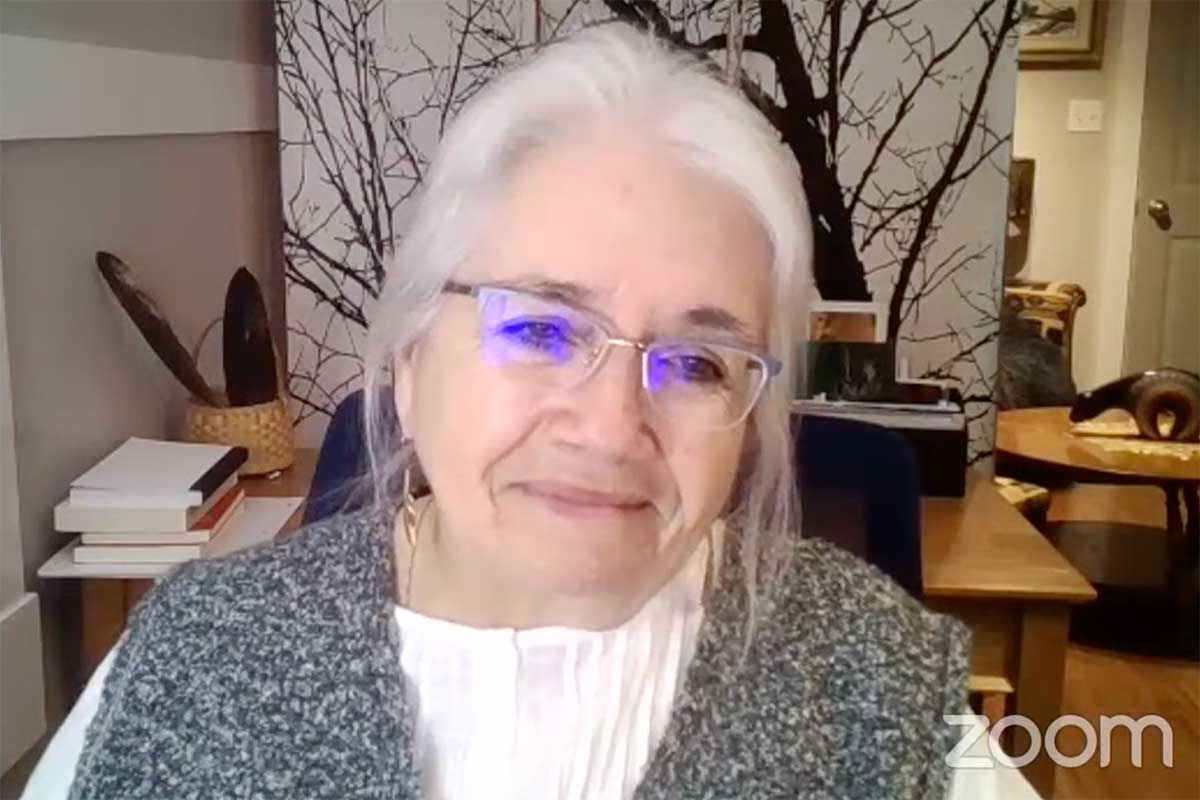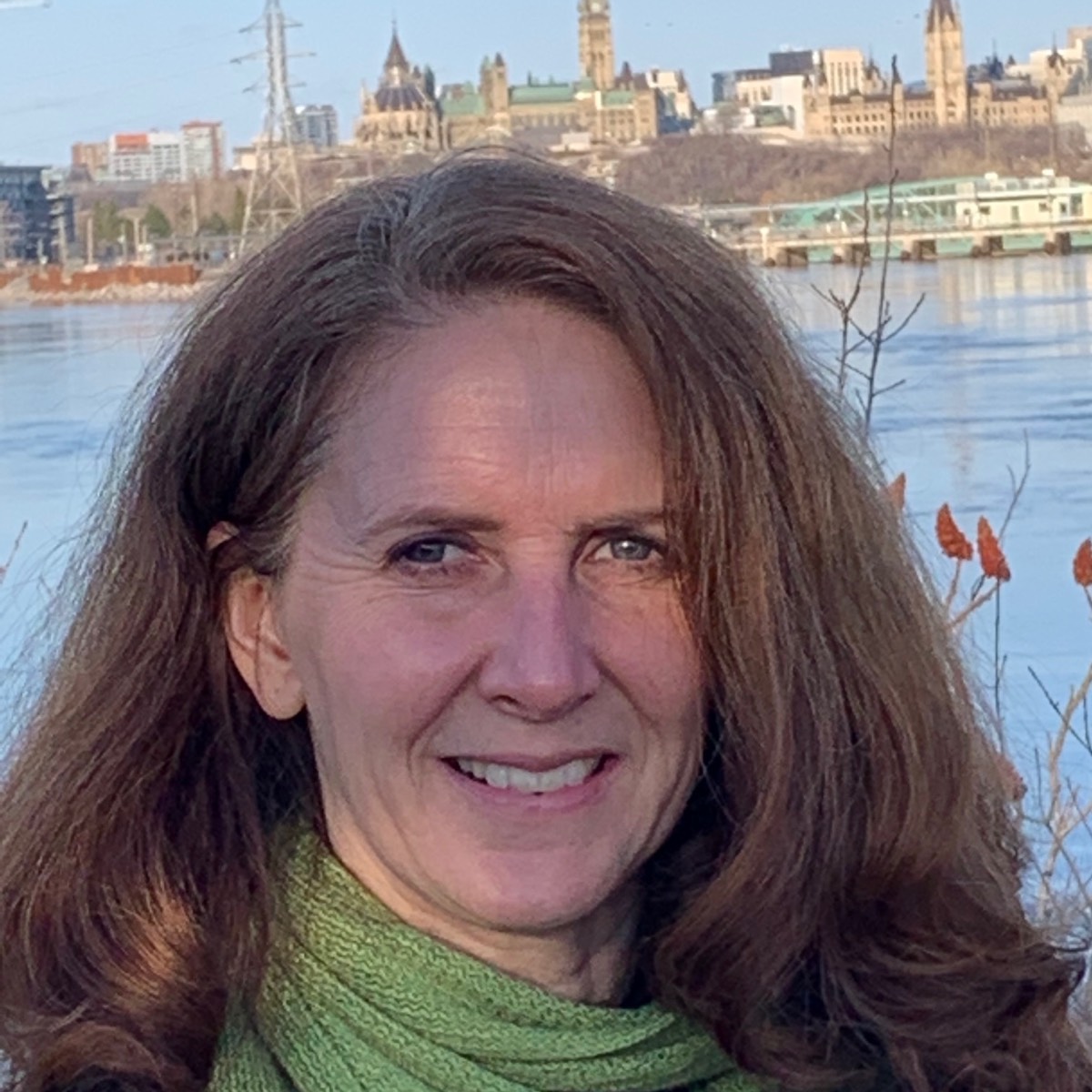On Dec. 6, Michelle Good, author of the novel Five Little Indians, which won the 2020 Governor-General’s Literary Award, delivered the inaugural lecture in an online series the Diocese of Ottawa is offering to mark its 125th anniversary.
Good’s novel takes readers into the trauma her characters experience while attending Indian Residential School and its impacts in their lives. Welcoming Good and the more than 100 people listening via Zoom, Bishop Shane Parker acknowledged the Anglican Church of Canada’s involvement in operating residential schools and the harm done. He spoke of the church’s two heartfelt apologies and efforts in recent decades “to put itself on a path to be a reconciler” and to build a profoundly new relationship with Indigenous peoples.
The bishop noted that it was important for the Diocese to mark its 125th anniversary not looking back with nostalgia but looking forward and listening “to things we need to hear now as a people who face the future, things that are important to our life as a church and to the world around us.” This first lecture in a series of four was offered in collaboration with the diocesan All My Relations Working Group.
Good, who is a member of the Red Pheasant Cree Nation on Treaty Six Territory, began working with Indigenous organizations in her teens and worked for over 20 years before becoming a lawyer in her early 40s. Her practice focused on advocacy for residential school survivors. She thanked organizers the invitation and the chance to continue the work she has chosen, which she described as “lighting a dialogue fire between Indigenous and non-Indigenous people with an urge to really come to understand what reconciliation will entail with a full understanding of the truths.”
History
She began with a definition of colonialism: “’the policy or practice of acquiring full or partial political control over another country, occupying it with settlers and exploiting it economically.’ There in a nutshell is the story of colonial Canada,” she said. “The people who came to this land did so with a very specific economic agenda and that agenda is one that we continue to live with to this day in terms of the never-ending exploitation of natural resources.”
Then she offered some historical “snapshots.” Some were personal — photos of her mother, aunts, uncles at the Anglican St. Barnabas Residential School at Onion Lake and her Kokum (grandmother) at the Battleford Industrial School in North Battleford, Sask.
She read a powerful passage from her novel about a young girl finding out that her friend had died of tuberculosis in the night at the residential school, her body gone, the bed already empty in the morning. Good said the story was based on her mother’s experience of watching her friend, who had tuberculosis, hemorrhage to death on the playground at school.
Other snapshots echoed the words of some key figures in the history of residential schools.
In 1907, Dr. Peter Henderson Bryce, the first medical officer for the department of Indian Affairs, was commissioned to do a study of living conditions in residential schools, looking at aspects such as nutrition and ventilation. “Indian boys and girls are dying like flies. Even war seldom shows as large a percentage of fatalities as the education system we have imposed on our Indian wards,” he wrote. “Dr. Bryce, one of my heroes, was summarily fired,” she said, noting that none of his recommendations to prevent the spread of tuberculosis were put into place.
Then came remarks made by Duncan Campbell Scott, superintendent of Indian Affairs, in 1918:
“It is readily acknowledged that Indian children lose their natural resistance to illness habituating so closely in residential schools and that they die at a much higher rate than in their villages, but this alone does not justify a change in the policy of this department, which is geared toward a final solution of our Indian problem.”
Good pointed out that the phrase “final solution” now associated with the Holocaust was used first by Scott. And in 1920, attendance at the schools was made mandatory.
“I used to think that it was only [a policy of] assimilation, but my thinking has evolved, and in fact in my view, this is genocide,” she said.
Good noted that a definition of genocide developed after the Second World War included the removal of children from one group to another. “This was a systematic removal of children from Indigenous communities with the specific and articulated objective of dismembering families, communities and nations.”
Reconciliation
Turning to the present, Good said: “The concept of reconciliation, as I see it in non-Indigenous Canada, has its limits. Reconciliation is okay as long as it doesn’t interfere with the existing power relations and economic relations in Canada.”
She mentioned the dispute over the pipeline on Wet’suwet’en land as an example.
“There is a Supreme Court of Canada decision that says that land belongs to the Wet’suwe’en, but the power of the state is brought to fore because the meaningful acceptance of their ownership of that land interferes with the Canadian economy,” she said.
“Until there can be a meaningful sharing of resources, so that we can have the necessary resources to implement healing, growth and meaningful self-governance and self-determination, real jurisdiction and real recognition that it, in fact, belongs to us, if we don’t have those things, the rest is just words.”
Allies, she said, must do as the Indigenous allies did when they supported the British and French in conflict. “They were allies to the death. They stood until they could not stand anymore. And that is what non-Indigneous people need to do. They need to stand until they cannot stand anymore. It is not enough for performative responses to our reality,” Good said.
“We are now… in the final stage of colonialism … when nobody needs to do anything terrible to us anymore. We’re doing it to ourselves. On one hand, we have that awful reality of being the highest in all terrible statistics — incarceration, addiction, suicide, being a murder victim, being a sexual assault victim, all of those statistics, we are number one. On the other hand, we have this phenomenal will to survive as we are….If only we could have the support, meaningful support, beyond words, we would be able to re-establish, self-governance, self-determination, and healing for our own communities.”
The whole lecture can be viewed on the Anglican Diocese of Ottawa’s YouTube channel.



An abiding sense of thanksgiving